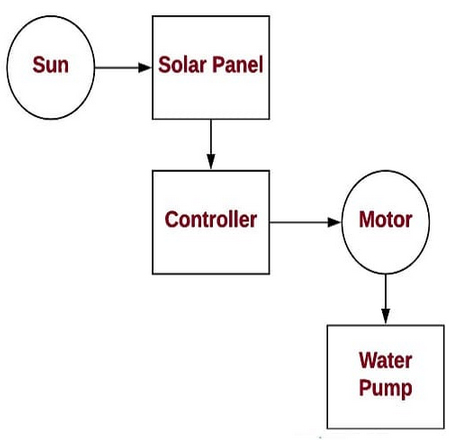For any solar pumping system, the capacity to pump water is a function of three main variables: pressure, flow, and power to the pump.

1. Pressure: For purposes of designing a solar pumping system, pressure can be thought of as the work that the pump must overcome to move a certain amount of water. This is most often expressed in either feet of head or psi (pounds per square inch). This is also referred to as pressure loss.
Any elevation difference between the source of water and the final destination will affect how hard the pump needs to work, or how much pressure needs to be created in order for water to flow. A pump must create 0.433 psi for every foot of elevation increase, to be exact. When water flows down and all around, the elevation difference between the surface of the water at the source and the level of discharge at the destination is the key figure to use to design a system in terms of how much pressure the pump needs to produce.
2. Flow: The amount of water that a system can move during a given time period. It is usually talked about in terms of gallons per minute (GPM) or gallons per hour. If everything else remains the same, flow will decrease when pressure increases and vice versa. For example, using the same pump and the same power set-up, if you increase the amount of work the pump must do by elevating the discharge or using smaller diameter pipe- in other words increasing the pressure the pump must generate, then the pump will deliver less flow in gallons per minute.
3. Power to the pump: Every solar water pump can produce a range of flows and pressures. Solar pumps draw a certain amount of power according to the amount of pressure that needs to be produced to deliver the water. Power is expressed in Watts, and PV panels are rated in Watts. When sizing a photovoltaic panel array, it makes sense to supply the amount of power that is needed. Adding more PV than is needed might enable the pump to turn on earlier and later in the day or under low-light conditions, but having extra PV power might not increase the flow rate when the sun is shining in full.